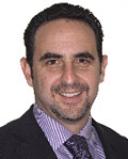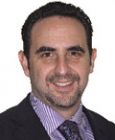Neuroscience
Stop Trying to Solve Problems
Hack the brain to increase complex problem solving.
Posted September 18, 2012
Like all of us, I am addicted to silly games on my smart phone. To justify the time, I imagine I play games that help me stay mentally sharp. One word game had me beat. The goal was to find every conceivable word out of 16 jumbled letters. Despite monumental efforts, I couldn’t even get close.

One day I noticed an unusual pattern. Every time I re-opened the game, words jumped off the screen that I hadn’t seen before. Distance from a problem was giving me clarity. This observation made me curious about the processes at work in my brain, and whether I might be able to harness this effect somehow for ‘real’ problems.
I’ve been researching the moment of ‘insight’ for more than a decade, and know that a quiet mind allows the weak connections of non-conscious processing to rise to awareness. However this was a little different. Somehow the act of coming back fresh to a problem was valuable in itself.
New research by Neuroscientist David Creswell from Carnegie Mellon (that will be presented at this year’s NeuroLeadership Summit) sheds light on this phenomenon.
Creswell wanted to explore what happens in the brain when people tackle problems that are too big for their conscious mind to solve. He had people think about purchasing an imaginary car, based on multiple wants and needs. One group had to choose immediately. These people didn’t do great at optimizing their decision. A second group had time to try to consciously solve the problem. Their choices weren’t much better. A third group were given the problem, then given a distracter task – something that lightly held their conscious attention but allowed their non-conscious to keep working. This group did significantly better than the other groups at selecting the optimum car for their overall needs.

FMRI scans also showed something interesting happening with the third group. According to Creswell, “The brain regions that were active during the initial learning of the decision information continued to be active (we call this unconscious neural reactivation) even while the brain was distracted with another task. This reactivation was predictive of how good participants were at making a better decision— more reactivation was associated with better decisions.”
To put it plainly - people who were distracted did better on a complex problem-solving task than people who put in conscious effort. This isn’t so surprising –the problem-solving resources of the non-conscious are millions if not billions of times larger than that of the conscious. What’s surprising is how fast this effect kicked in – the third group were distracted for only a few minutes. This wasn’t the ‘sleep on it’ effect, or about quieting the mind. It was something more accessible to all of us every day, in many small ways.
Back to my puzzle. Remembering this study, I tested out a new strategy. Every few minutes I would close down the game and play another not-too-difficult game. Then I’d come back to the 16 letters to see if my non-conscious had found any new patterns. Lo and behold, after each distracter break, even if they were very brief (less than 30 seconds) or regular, I had new breakthroughs. Suddenly I was finding more words than ever before.
Previously, I was going about a cognitive challenge the wrong way for the brain, by continuing to push at the problem consciously. Now I was getting a better outcome, faster and with less effort. I immediately started applying this insight to other problems I was working on, with similar benefits. Imagine the increase in problem solving that could occur when a team of people, or a whole organization, started to apply this principle.
 There are so many things we have wrong about the brain. As we begin to develop the tools to understand its quirks, I suspect that many more surprising discoveries will emerge, that can help us do more than just feel better about our vocabulary.
There are so many things we have wrong about the brain. As we begin to develop the tools to understand its quirks, I suspect that many more surprising discoveries will emerge, that can help us do more than just feel better about our vocabulary.
The 2013 NeuroLeadership Summit is going local with three days of events in three different locations. Click here for more information.


